Power Plant [Original] (1896)
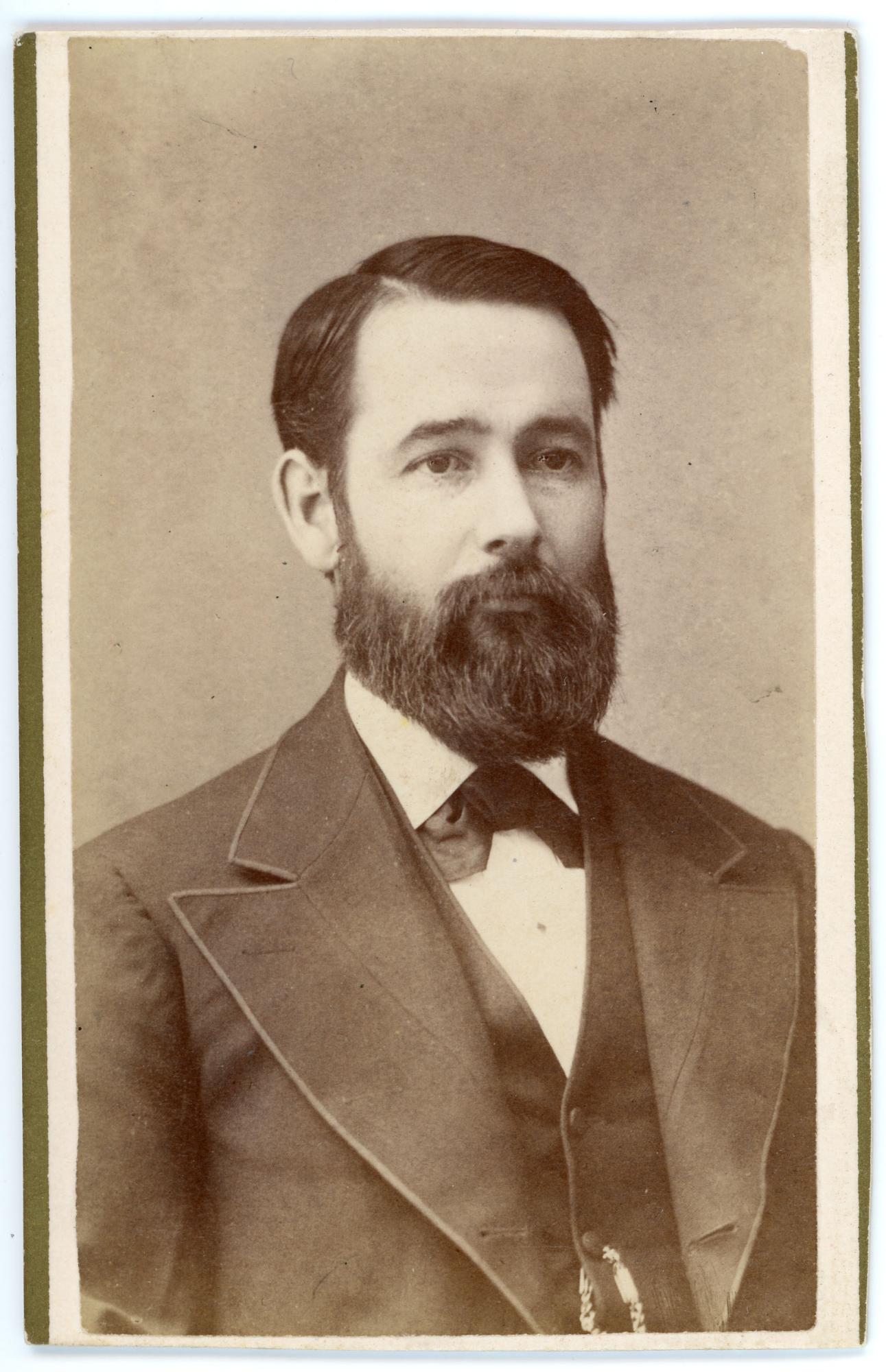
Heat and Light: a Brief History of UNI Power Plants
From its very beginnings, UNI has been concerned with its heating facilities. David Sands Wright recalled the first day of class at UNI, September 6, 1876, in his Fifty Years at the Teachers College: "It was a dismal day! The moisture-laden clouds which had already obscured the sun for the previous two days released their contents in a drenching, cold September rain. Since the heating system was under repair and not yet completed, there was no heat to relieve the cold in the room in which the twenty-seven prospective students and four faculty members met."
Maude Gilchrist, daughter of James Gilchrist (the school's first principal), also had chilly memories of those early days before the heating system was completed. The cook stove in the kitchen offered some heat to the chilled.
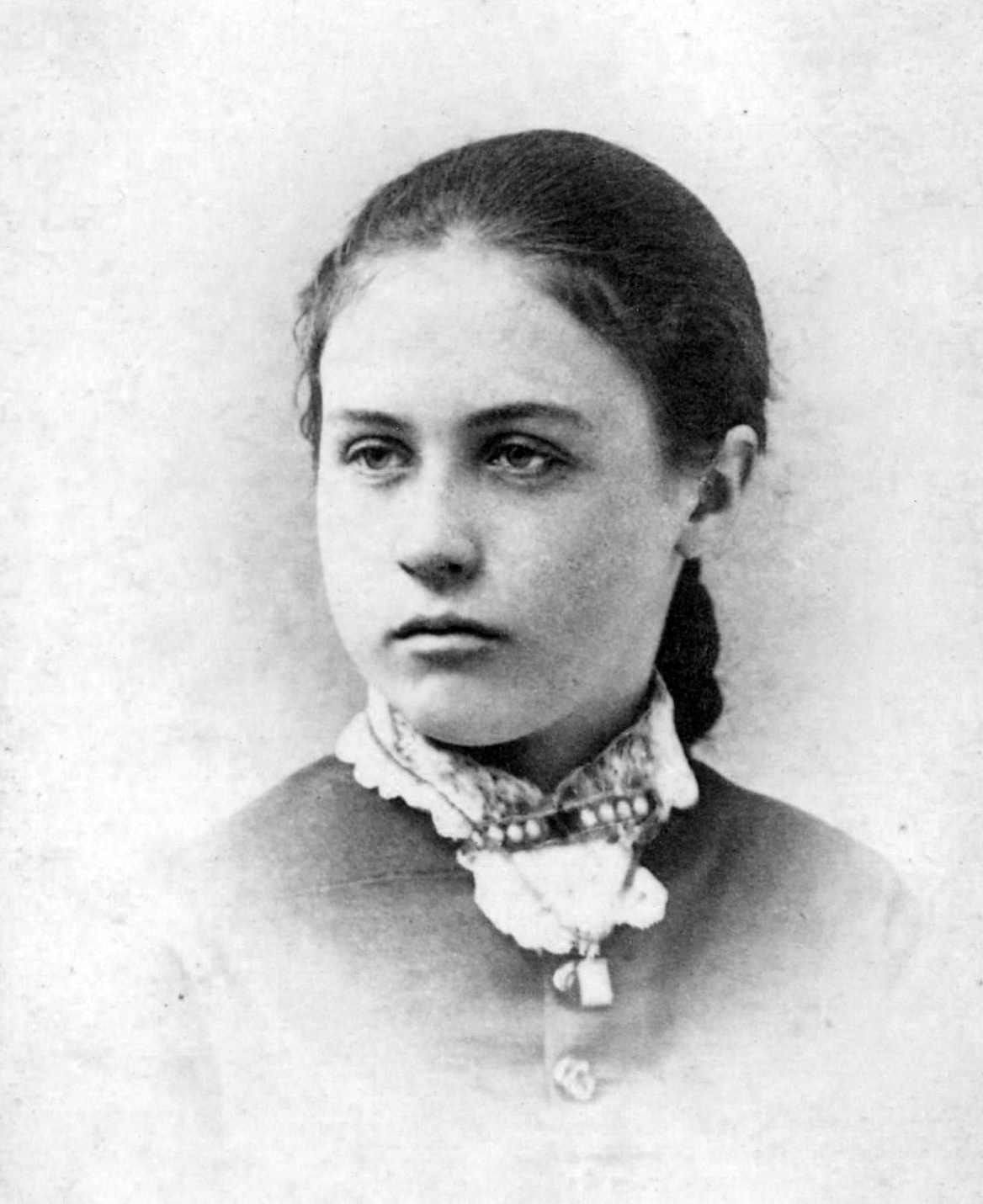

The Iowa State Normal School, UNI's first name, inherited its facilities from the Civil War Soldiers Orphans Home when the latter institution consolidated operations in Davenport. The buildings included the large home itself, later called Central Hall, and several much smaller out-buildings.
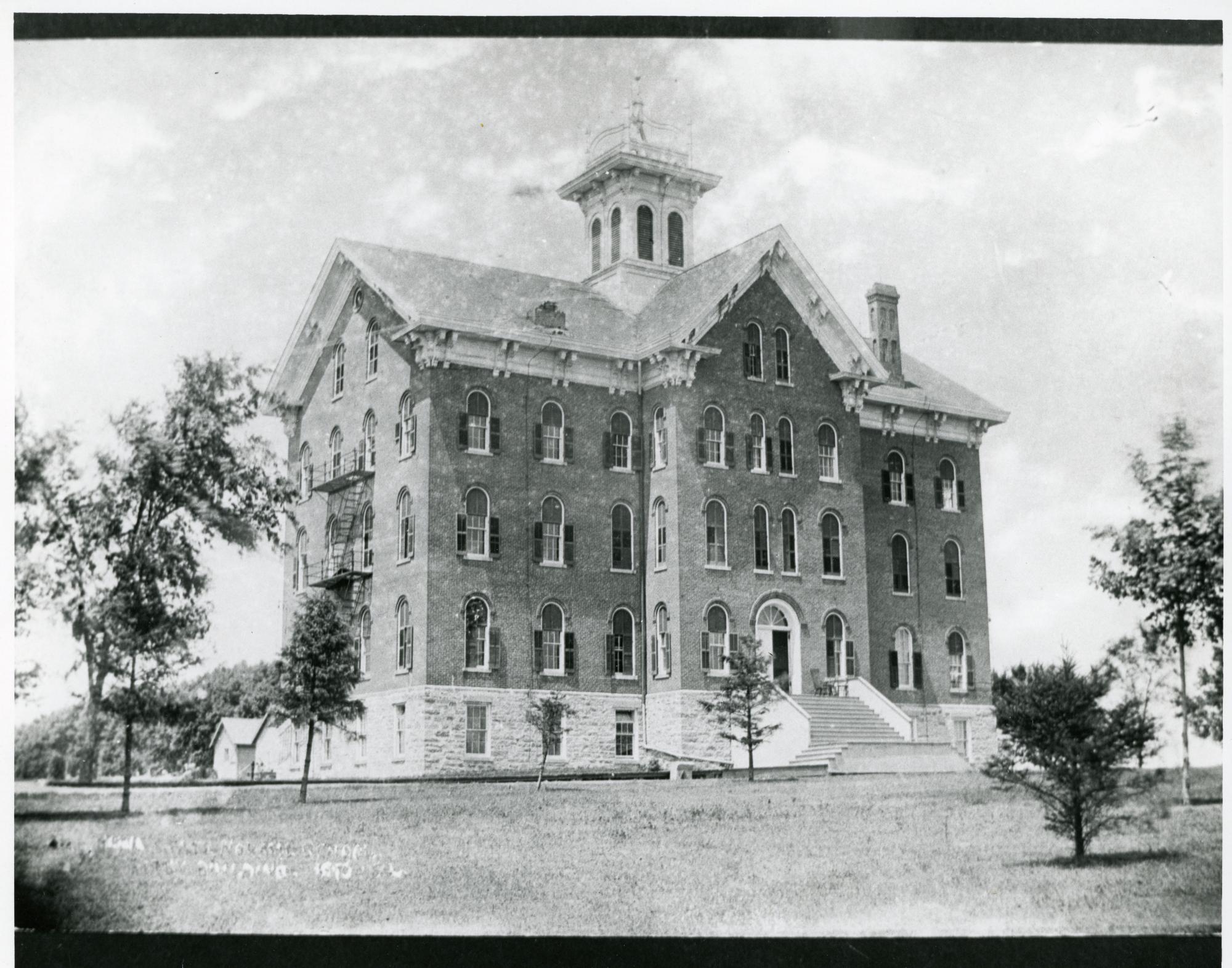
The main orphans home building seems to have been heated with wood or coal stoves initially. In recalling the opening of the building on October 12, 1869, the Orphans Home Superintendent stated that thirty stoves were unable to heat the orphans' living quarters comfortably.

But, by the time that the Normal School inherited the building from the Orphans Home in 1876, some sort of steam system had been installed. Again, as Maude Gilchrist recalled much later, "Here, too, lived Mr. Marks (actually Martz), a faithful engineer, who managed the steam heating plant, keeping us warm with those creaking pipes, and providing steam for hot water on each floor. We drew a pitcher of cold water from the big pipe, then let the steam from a near-by pipe bubble into the pitcher."
With a combination of state appropriations and local donations, the Normal School added a new building, South Hall (later called Old Gilchrist Hall), in the fall of 1883. The Normal School directors asked for funds to connect the new building to the steam system in Central Hall, but the General Assembly did not respond. The directors then directed $3,000 from other school funds to complete the project.


A visiting committee from the General Assembly noted this re-direction of funds, but commended the action anyway. They stated that "the directors and officers acted wisely." So, steam heat probably reached the second Normal School building when it was opened for use in 1883.
The Steward was responsible for the heating system as well as for lighting (kerosene lamps), repairs, board bills, and property inventory. Initially the Steward, William Pattee, reported directly to the Board of Directors. However, because of conflicts over authority, the Board later directed the Steward to report to the Normal School President.
In 1892, the General Assembly approved $9,000 for a new smokestack and improvements to the steam heating system.
In 1895 the Normal School added a third building, the Administration Building. Though this building was not as large as the earlier two buildings, it would still need additional steam to provide heat and power. An engineer certified that the old boiler, after twenty years of service, needed to be replaced. The General Assembly responded with funds to replace the old system with a new one.
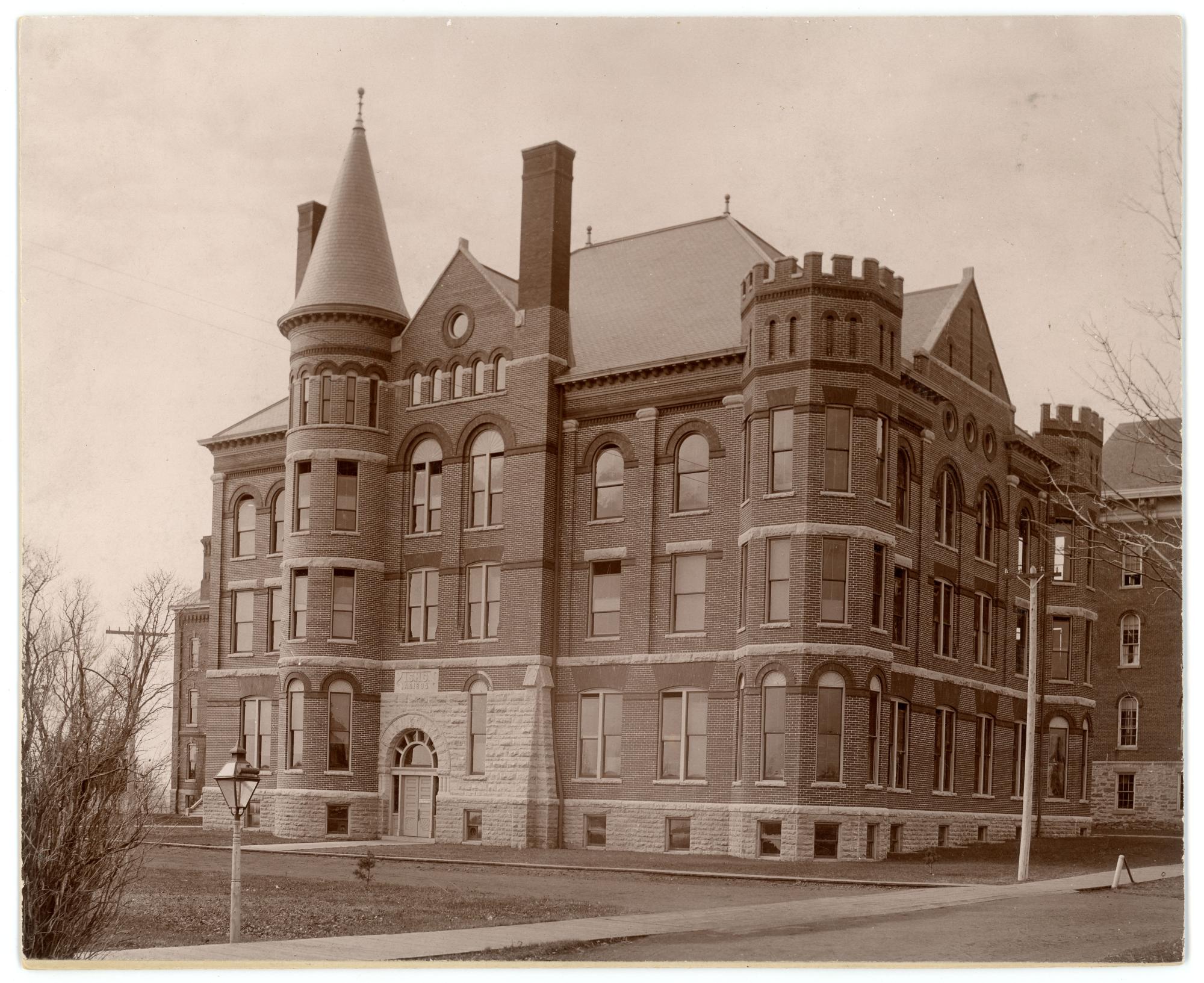
By 1896, then, the school had a separate building called the Steam Plant and a 135 foot tall smokestack, which stood in the area of the current Maucker Union Expansion.
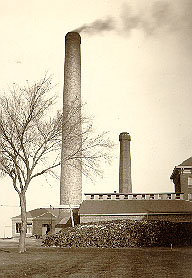
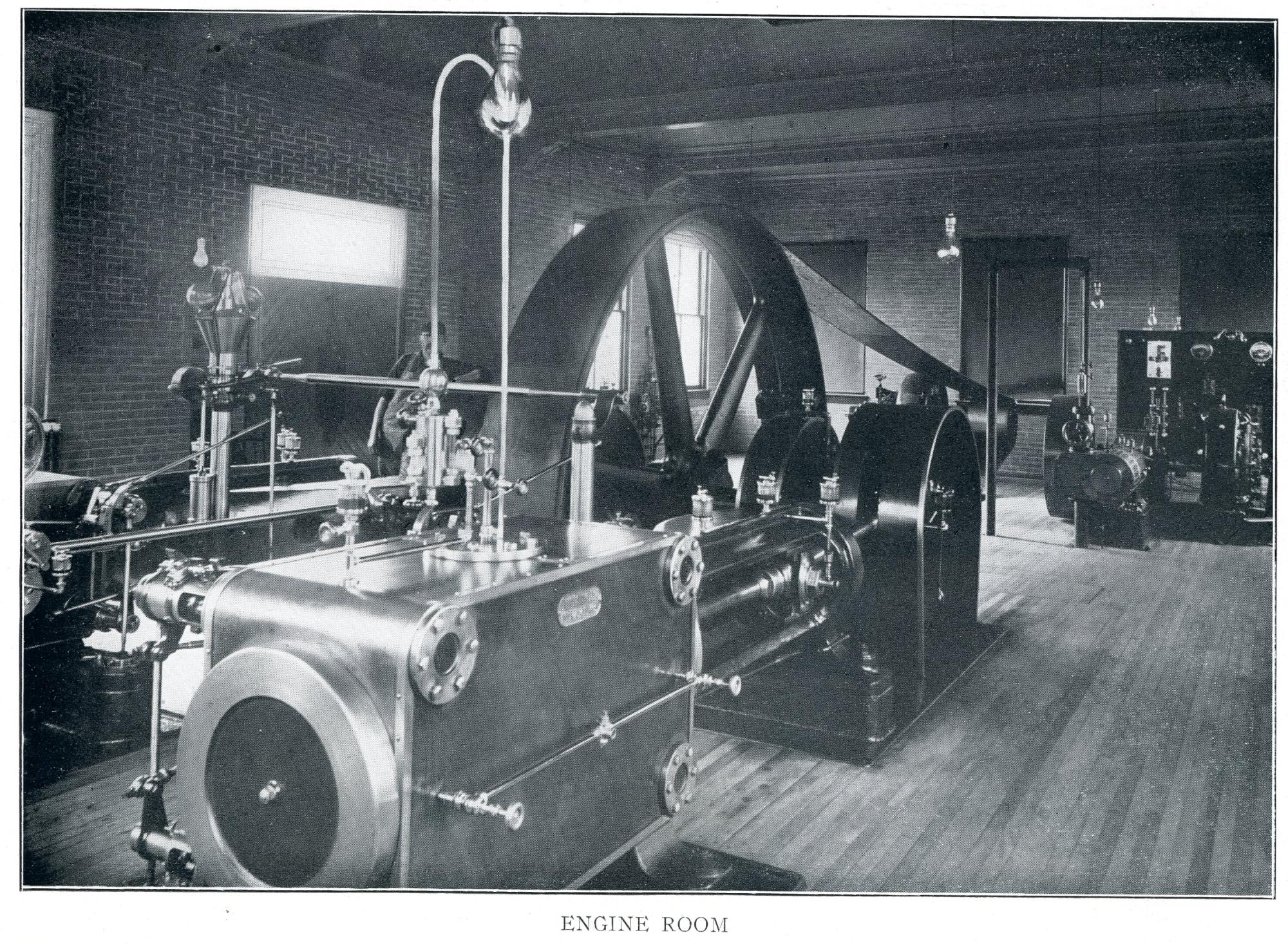
By 1902 the school catalogue reported that the Steam Plant included the "Engine and Dynamo Rooms" for the generation of electricity.

In 1905, President Seerley proudly announced that the combined steam and power plant would be able to provide enough heat and electricity for many years to come. His judgement proved sound. During the next few years at least five major buildings were added to the UNI campus. No major changes in the power plant are noted until 1923 when two new boilers were installed.
However, as he approached retirement in 1928, President Seerley was deeply concerned about the adequacy of the old steam system to continue to provide for an expanding physical plant. The school had just purchased the forty acres west of the original forty acre campus. Development would certainly occur in that new area. New buildings west of the Campanile would require more steam and long steam delivery lines. Seerley thought that the system would be stretched so far that the school might be forced to close if the heating plant needed extensive repairs or failed altogether.
When President Latham took office in 1928, he renewed President Seerley's requests for a new heating and power plant. He pointed out that the old, hand-fired plant required special, more expensive coal and increasingly frequent repairs. In addition, the school could not build additional dormitories until it had boilers which could provide sufficient steam.
He also noted the problems associated with smoke and soot from the smokestack located right in the middle of campus.
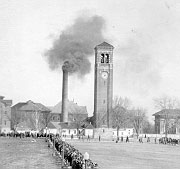
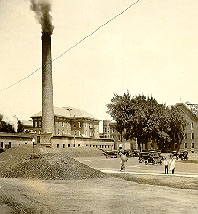
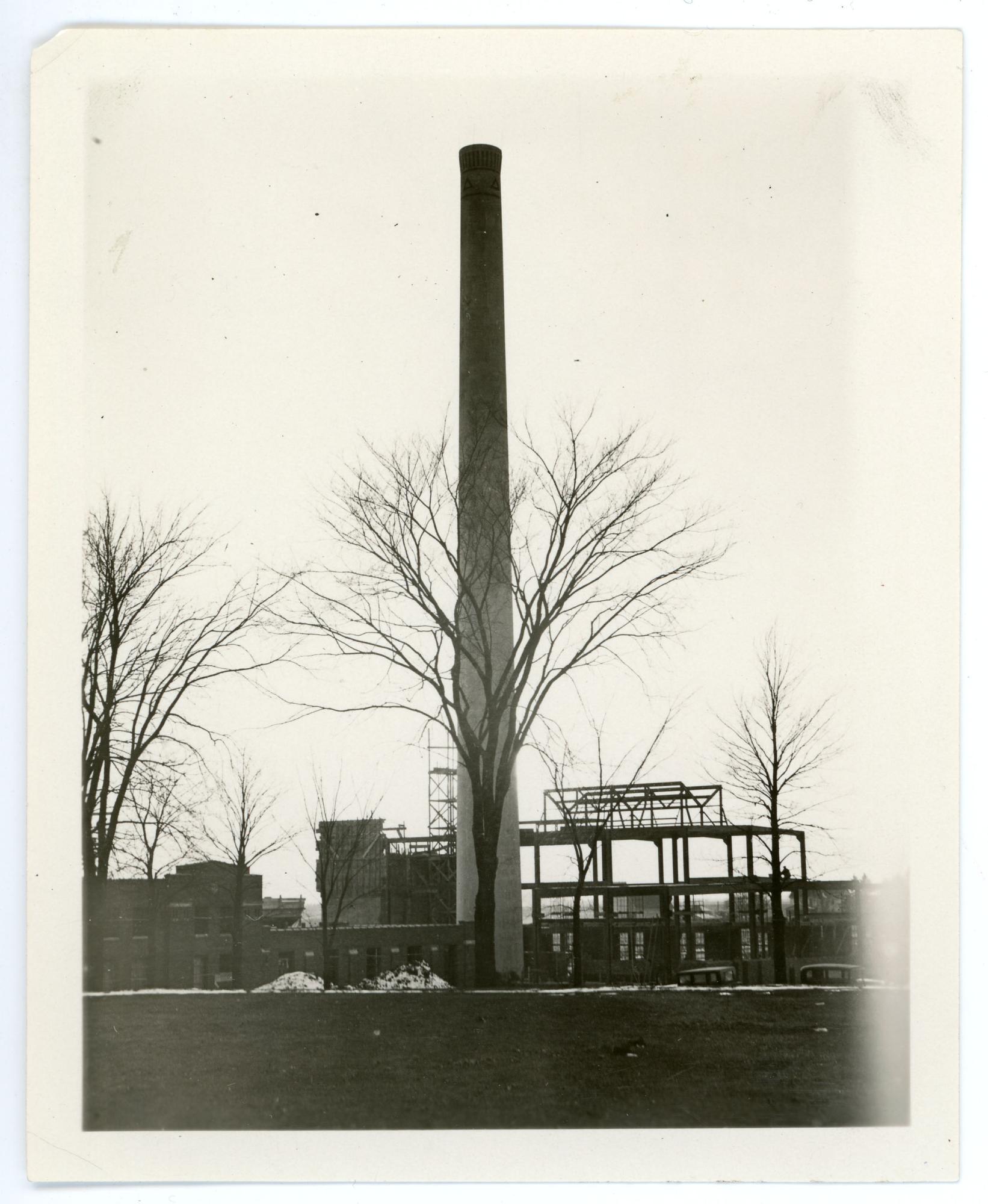

Armed with a consultant's report, President Latham persuaded the General Assembly in 1930 to provide $180,000 for a new plant. Construction got underway in 1931 and was completed in 1933. Getting this plant funded and built under the difficult economic circumstances of the early 1930s is a strong testament to President Latham's powers of persuasion and the school's great need.
The new plant was constructed southeast of the site of the current Business Building. In the 1930s, that area was on the edge of campus. The prevailing winter north and west winds would tend to carry smoke and soot away from classrooms, dormitories, and offices. In addition, 27th Street was then a through street; deliveries could be made directly to the plant with minimal disruption of campus activities.
When the new plant was completed, most of the old central campus plant was demolished, though the Dynamo Room survived many years as a storage facility, a craft shop, and even as an anthropology lab until the Maucker Union Expansion got underway in 1988.
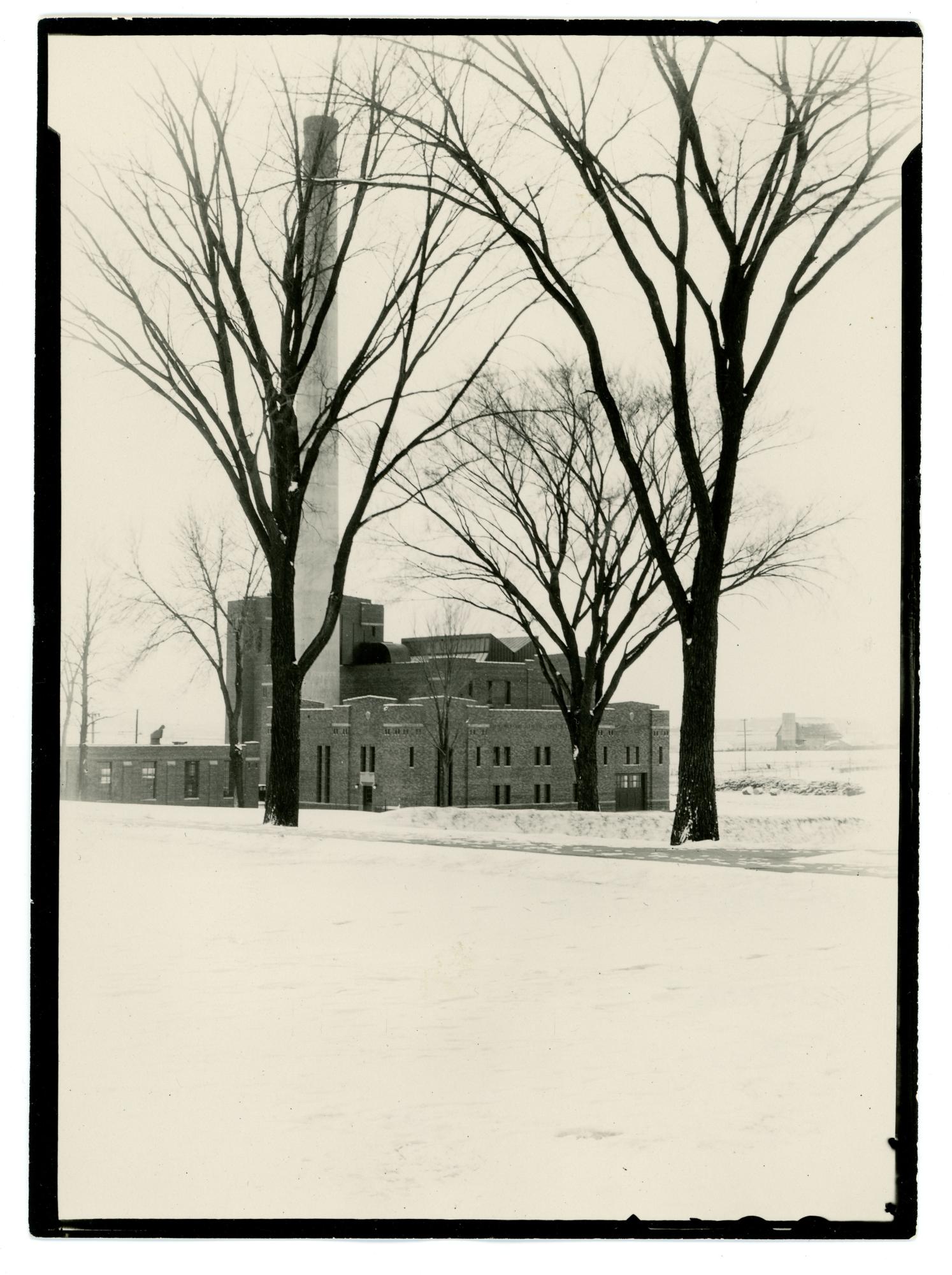
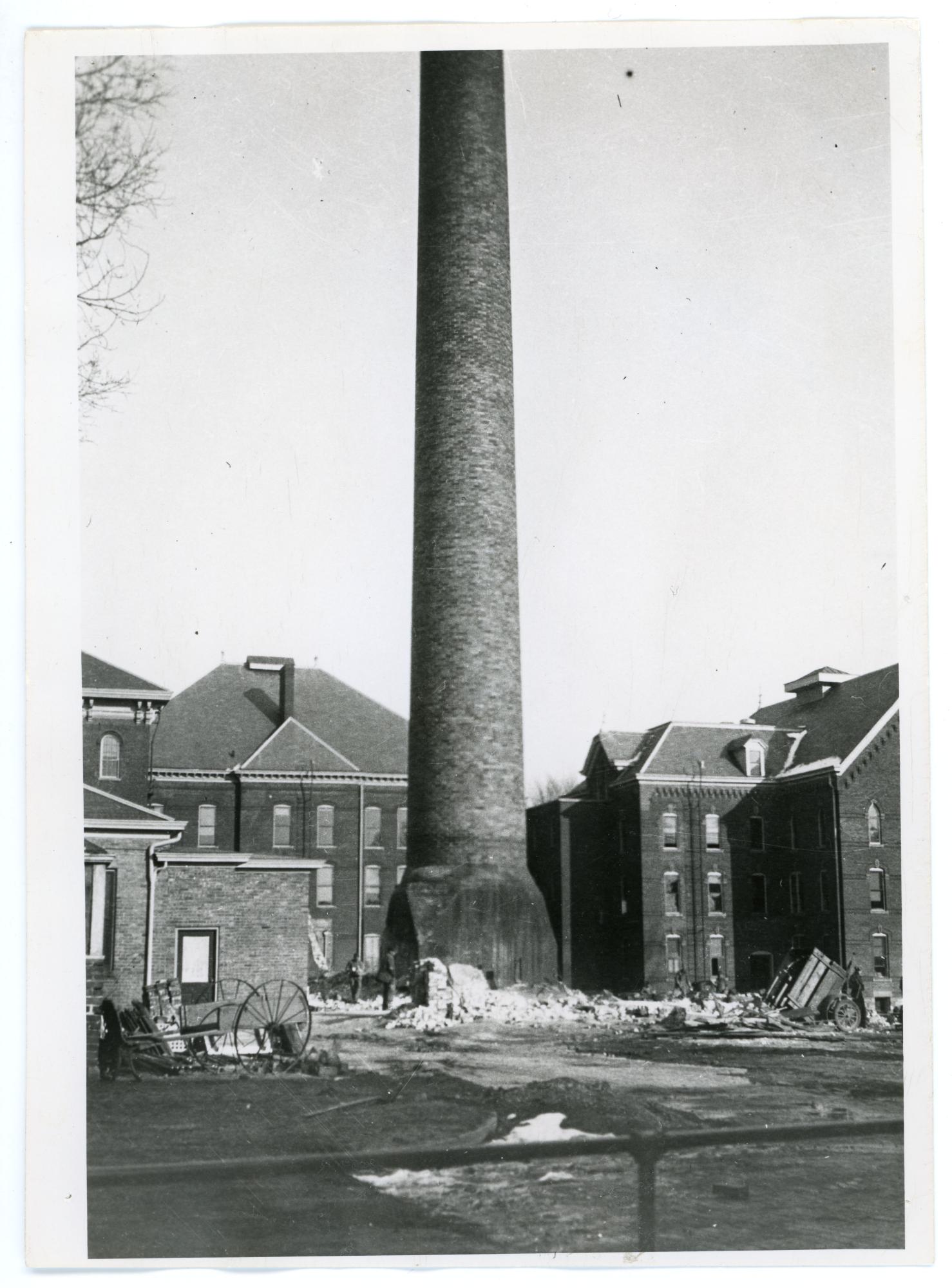
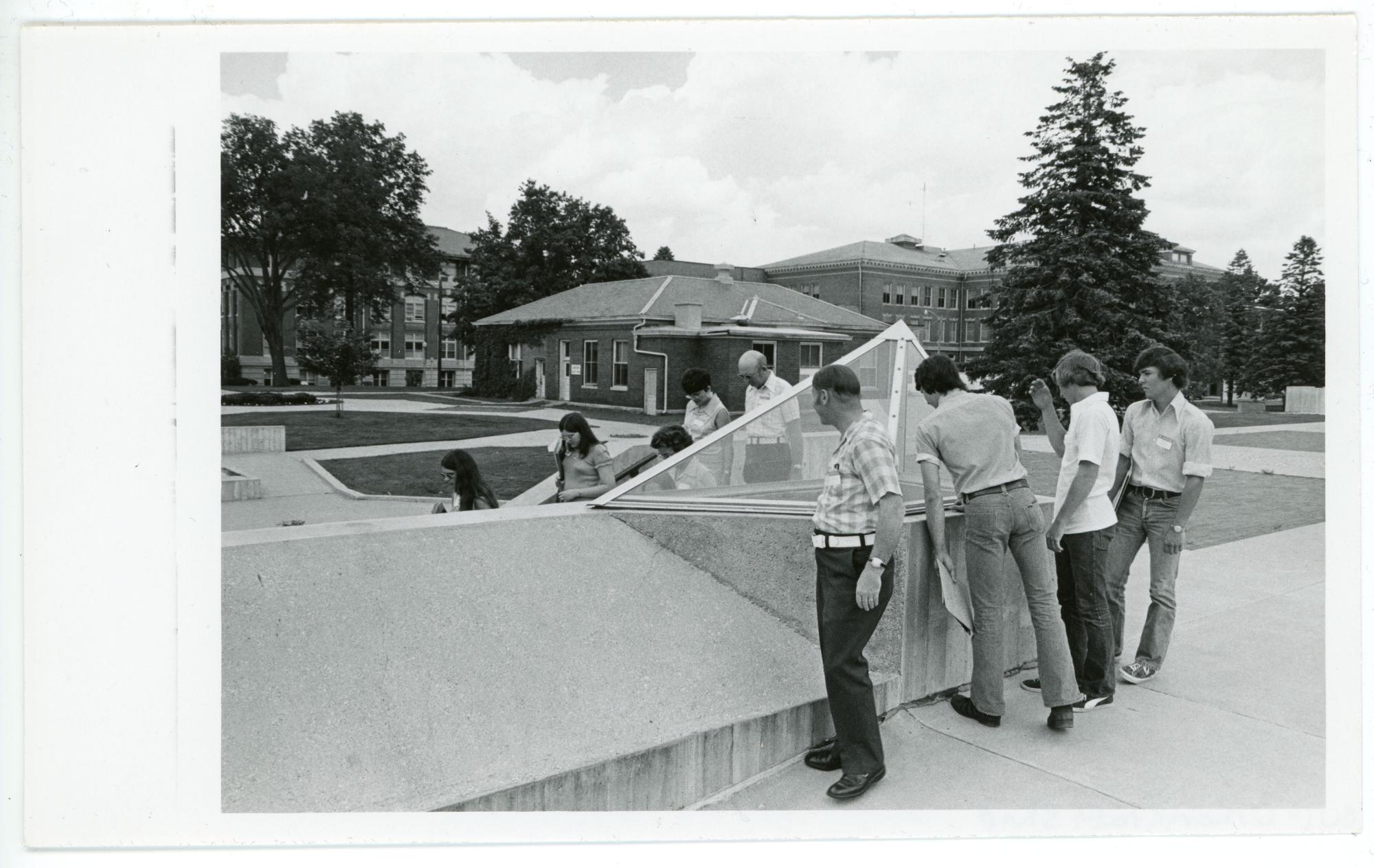
Ultimately the 1933 plant, built in Industrial Deco style, would provide the campus with a good portion of its heat and light for over 50 years. New boilers were added in 1951 and 1961. But by the late 1960s, the campus need for heat and light had expanded dramatically.

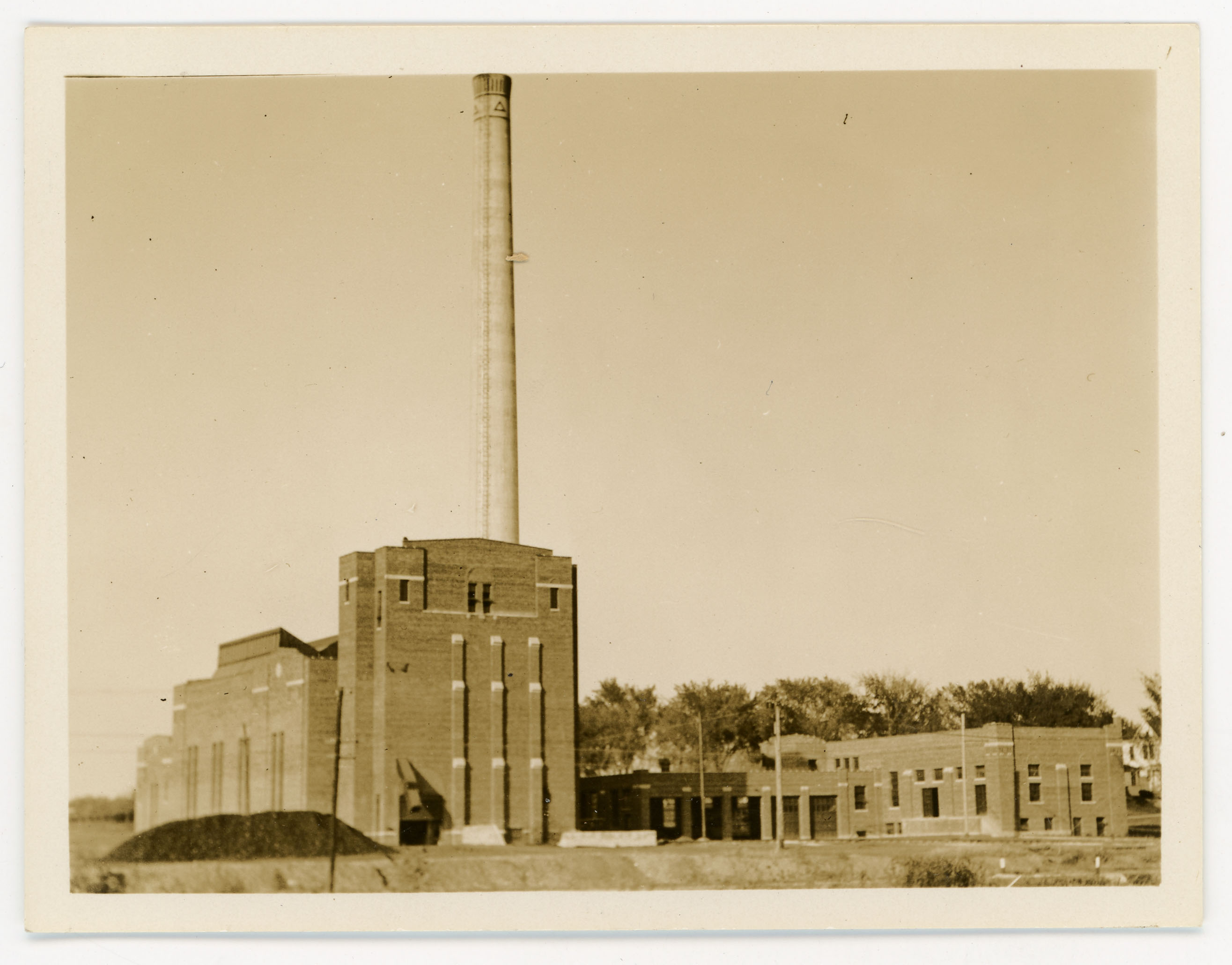
In 1969, the Regents awarded a $1.4 million contract for a new power plant building and steam tunnel extensions to a site west of Hudson Road and south of 27th Street. A new $8.75 million coal-fired boiler began operation there in 1980. This boiler produced 120,000 pounds of steam per hour. It replaced two 1932 boilers that had each been rated at 30,000 pounds of steam per hour. This was the beginning of the complete phase-out of the 1933 plant.

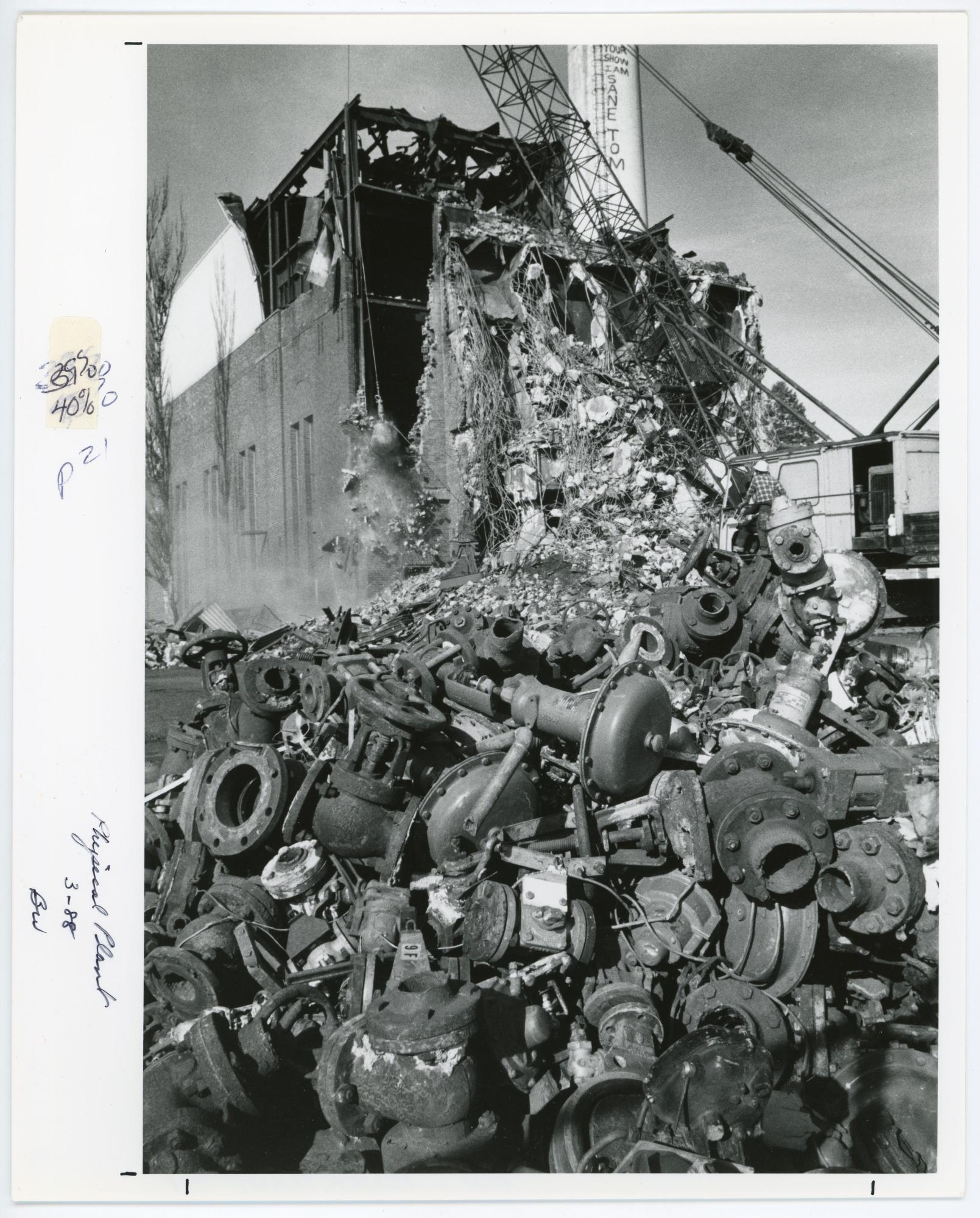
With plans in place for an additional $11.1 million boiler at the new site, the old plant was scheduled for demolition in 1988. Most of the old plant underwent conventional razing with a wrecking ball and bulldozers. But the 195 foot tall smokestack presented a special problem.
The Cleveland Wrecking Company, general contractors for the demolition project, called in the Gerard Chimney Company to deal with the smokestack. Explosives were ruled out because of the proximity of buildings such as Baker Hall. On May 20 and 21, 1988, the chimney experts chipped away the concrete base of the stack.
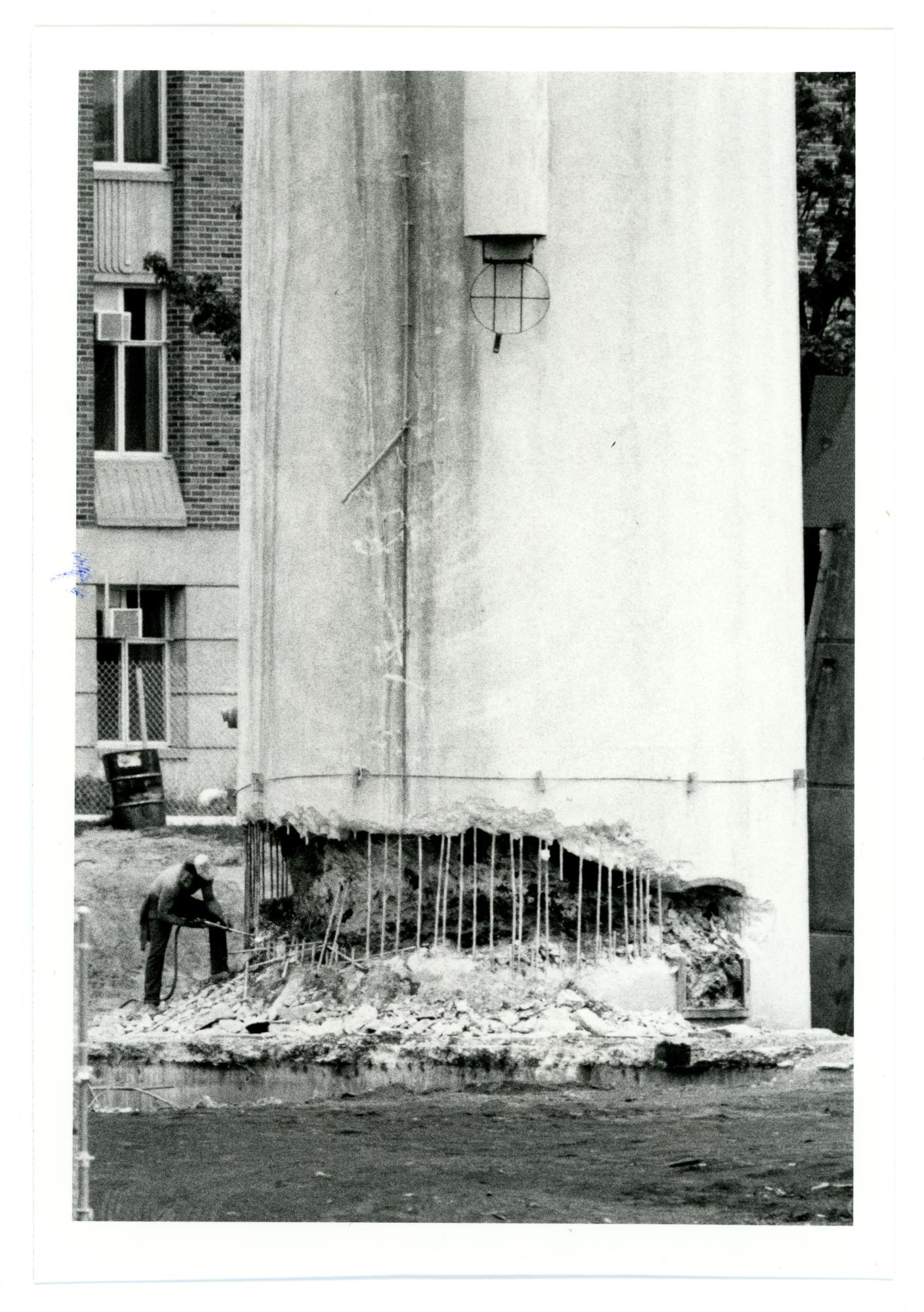
By Sunday, May 22, the concrete on the western side of the base had been chipped away and only the reinforcing bars remained to hold up the stack on that side. News reports indicated that the stack would be dropped around noon. As spectators gathered in the parking lot west of Gilchrist Hall, a worker began to cut the reinforcing bars one-by-one. The work went slowly. Some spectators grew impatient. At a little after 2 PM, the stack began to tip and then quickly fell in a cloud of dust onto the prescribed area.
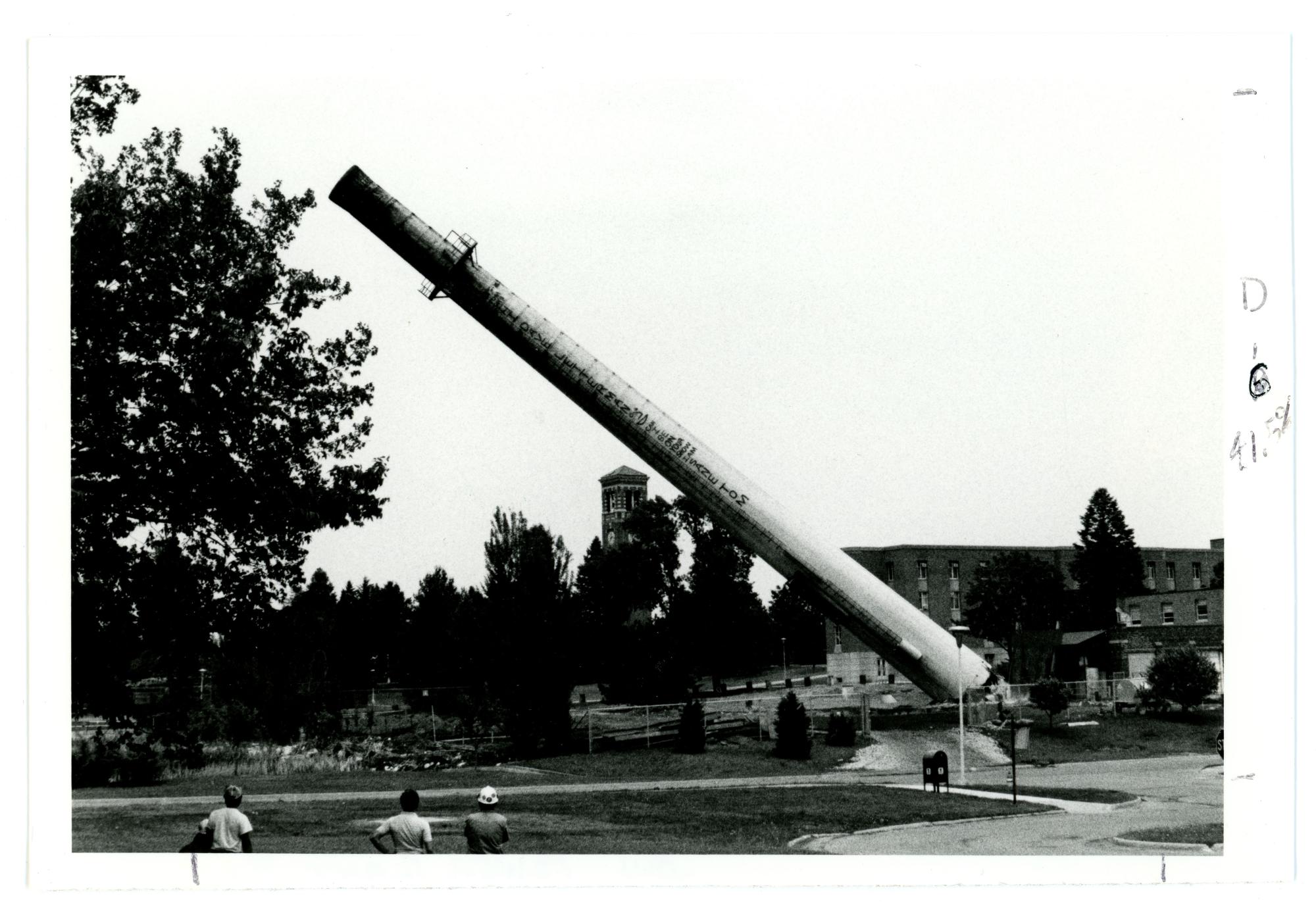
Currently the power plant west of Hudson Road uses fluidized bed technology to burn the coal that furnishes a large portion of the energy needed on the UNI campus.
Written and developed by Gerald L. Peterson and Susan Basye.
Special Collections and University Archives
September-October 1997; photos and captions updated by Graduate Assistant Eliza Mussmann February 9, 2023.
